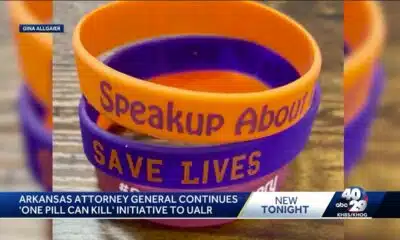News from the South - Alabama News Feed
Fires and floods are eviscerating US communities, intensifying the housing crisis • Alabama Reflector
Fires and floods are eviscerating US communities, intensifying the housing crisis
by Robbie Sequeira, Alabama Reflector
February 8, 2025
This story originally appeared on Stateline.
After nearly a month, the Eaton and Palisades wildfires that ravaged California have been contained. But for Southern California and state agencies, another challenge lies ahead: helping people find homes.
The wildfires levied significant long-term damage, with thousands of homes destroyed, billions in damages and a worsening of the state’s housing and homelessness crises. Even before the fires, California already had a shortage of 1.2 million affordable homes, with Los Angeles County alone facing a deficit of 500,000 units.
“This tragic loss will certainly make the housing crisis more acute in multiple ways,” said Ryan Finnigan, an associate research director at the Terner Center for Housing Innovation at the University of California, Berkeley. “L.A. continues to need vastly more affordable housing, and people displaced from lost affordable units might need the most support to become stably housed again.”
GET THE MORNING HEADLINES.
Even those displaced from market-rate or high-end housing will face challenges in an already tight market, with thousands searching for housing at once — likely driving prices even higher for everyone.
Natural disasters are worsening the U.S. housing crisis, upending the home insurance market, and reducing housing options — particularly for lower-income residents. And that trend will likely grow as disasters become more frequent and severe.
Climate change, experts warn, is the world’s fastest-growing driver of homelessness, displacing millions of people annually. In 2022 alone, disasters forced 32.6 million people worldwide from their homes, according to a 2023 report by the Internal Displacement Monitoring Centre.
If trends continue, 1.2 billion people globally could be displaced due to disasters by 2050, according to the international think tank Institute for Economics & Peace.
The consequences are already playing out.
After the 2023 Maui wildfires, homelessness in Hawaii rose by 87%. With Los Angeles’ fires destroying about six times as many homes, experts predict that California’s homeless population will surge dramatically in 2025.
“Natural disasters cause a massive spike in homelessness,” said Jeremy Ney, a macroeconomics policy strategist who studies American inequality. “The primary goal of relief organizations like the Red Cross is to prevent people from becoming permanently unhoused — but for many, it can take a decade or more to recover.”
A long path to recovery
According to the Migration Policy Institute, 3.2 million U.S. adults were displaced or evacuated because of natural disasters in 2022, with more than 500,000 still unable to return home by the end of the year.
The recovery timeline can be grueling. In North Carolina, state officials managing Hurricane Helene’s recovery warned that key federal funding for home reconstruction could be delayed for months — possibly into next fall, according to NC Newsline.
In the event of a disaster, the Federal Emergency Management Agency, known as FEMA, focuses on shorter-term relief, offering emergency shelters, disaster unemployment assistance and grants for rebuilding. State agencies, though, are tasked with the long-term projects, such as making infrastructure repairs and developing housing initiatives, said Samantha Batko, a senior fellow in the Housing and Communities Division at the Urban Institute.
“Disaster relief programs like FEMA focus on short-term recovery, whereas homelessness response systems struggle with long-term systemic challenges,” said Batko. “People who live in unsheltered places during disasters, like on street corners or in cars, have higher exposure to ash [from fires] and debris, which leads to more health issues and emergency room visits.”
At the time of the Eaton fire, Los Angeles’ Skid Row was home to roughly 2,200 unsheltered people, experiencing some of the worst air quality effects, according to Batko, who co-authored a report on the issue for the institute.
Los Angeles’ homelessness crisis was already dire: Last year, Los Angeles County had just 27,000 shelter beds for 75,000 unhoused residents. The fires have now left thousands more without homes, further straining an already overwhelmed system.
“The relevant governments — state and federal agencies, L.A. County and its 88 cities — must be on the same page to mount an organized and effective response,” said Finnigan, of the Terner Center for Housing Innovation.
There may be another twist coming.
When President Donald Trump visited western North Carolina last month, he floated the idea of eliminating FEMA and leaving disaster response to the states, with federal reimbursement of some costs. He has since signed an executive order calling for a full assessment of FEMA and recommendations for “improvements or structural changes.” State emergency managers quickly responded that they need FEMA’s involvement.
Insurance challenges
Disaster recovery is not equal: Homeowners with insurance typically rebound the fastest, as policies cover much of the rebuilding costs. But as climate disasters intensify, the insurance market has begun to unravel. In 2023, insurers lost money on homeowners’ coverage in 18 states — more than a third of the country — according to a New York Times analysis.
It’s led to an insurance crisis — rising premiums, reduced coverage or insurers pulling out altogether — a trend that began in California, Florida and Louisiana but that has spread across the country.
Even before this winter’s fires, these insurance issues would have been a defining legislative issue for California, predicted Alexandra Alvarado, director of education and marketing at the American Apartment Owners Association, an industry lobbying group.
“There’s a great anxiety from … property owners on whether they will be insured or covered when another wildfire or a similar event costs them their home, and whether it’s worth it to rebuild and start over,” Alvarado told Stateline in December. “I think it’s going to be on the radar of lawmakers not just in our state, because we’re seeing this play out in other states as well.”
During the fires, California Insurance Commissioner Ricardo Lara reminded insurers of their legal duty to cover mudslide damage caused by recent wildfires, as colder, wetter weather raises risks, particularly for Los Angeles County wildfire survivors.
Already, State Farm, the largest home insurer in California, has asked the state to approve “emergency” rate hikes because of the fires, seeking an average 22% increase for homeowners and 15% for renters.
Barriers for lower-income residents
The long-term recovery process is filled with hurdles — especially for low-income and marginalized communities.
Lower-income households are disproportionately vulnerable to climate disasters; they’re also disproportionately harmed. Residents may reside in older, high-risk homes that are more susceptible to destruction. In some places, lower-income neighborhoods were built in low-lying flood plains because land was cheaper or red-lining kept families of color from living elsewhere.
Many households cannot afford homeowners or flood insurance, and strict eligibility criteria may prevent them from qualifying for disaster relief loans, said Katie Arrington, a disaster recovery expert for Boulder County, Colorado.
Natural disasters cause a massive spike in homelessness.
– Jeremy Ney, a macroeconomics policy strategist
Renters, mobile home residents and uninsured households often can’t afford homes comparable to the ones lost to disaster. Without financial safety nets, many displaced residents face an impossible choice: endure months or years of instability, or leave their community altogether.
“People with insurance have an easier time recovering than people without it. Homeowners, in general, recover more easily than renters,” Arrington said. “There’s a spectrum, from homeowners with full insurance to renters without insurance, and each group faces very different recovery timelines.”
One major barrier to recovery for renters is the post-disaster surge in housing costs. A Brookings Institution report published in October 2023 shows that effective rents typically rise 4% after a disaster and remain elevated for at least five years.
In the past few weeks in Los Angeles, fire-affected neighborhoods such as Venice and Santa Monica saw rents surge by 60-100% within days, fueling calls for stronger enforcement of California’s anti-price gouging laws.
California lawmakers in January allocated billions in funding to state and federal government relief efforts and put an immediate moratorium on evictions. The governor’s office also has issued an executive order prohibiting Los Angeles-area landlords from evicting tenants who provide shelter to survivors of the Los Angeles-area firestorms.
Experience and luck
For many municipalities, past experience is the only real preparation for disaster recovery. And sometimes, a bit of luck helps, too.
In 2021, the Marshall Fire in Colorado forced the evacuation of 35,000 residents in Boulder County and destroyed nearly 1,000 buildings. County officials say their response benefited from both preparation and circumstance.
“Some of our success was due to experience, but some of it was luck. We had a vacant county-owned building available to house the disaster assistance center, which allowed us to act quickly,” said Arrington, the disaster response manager for Boulder County. “If we had needed to rent or find a less-central location, the response would have been slower.”
Across the U.S., states are grappling with similar challenges.
In North Carolina, state-led efforts such as the Back@Home program helped rapidly rehouse approximately 100 displaced households after Hurricane Florence in 2018, and later helped nearly 800 households find more permanent homes. The program has since become a model for addressing disaster-fueled displacement.
Similarly, after Tropical Storm Helene last fall, Asheville, North Carolina, allocated $1 million in rental assistance to prevent displacement. While Red Cross and state-run shelters were scheduled to close by Nov. 10, the city coordinated with the WNC Rescue Mission to keep one shelter open longer for the remaining displaced residents.
By Dec. 31, 2024, all nine remaining shelter participants had secured exit plans — ensuring no one was left without a place to go, according to the city’s spokesperson, Kim Miller.
Hawaii also has launched large-scale relief initiatives. In response to the 2023 Maui fire, HomeAid Hawaii, in partnership with the state, developed interim housing solutions for 1,500 displaced residents for up to five years.
“Disaster-driven homelessness requires targeted programs that meet the needs of people at risk,” said Batko, of the Urban Institute. “States must integrate housing policy into emergency preparedness, or they’ll find themselves overwhelmed when the next disaster strikes.”
In Colorado, Boulder County has managed to rebuild or begin construction on about two-thirds of the homes that were lost.
Boulder County is aiming for an ambitious 90% recovery rate, meaning 9 of 10 displaced households will find a new homes in the area. But even that success comes with a twinge of mourning for what was lost.
“We started this recovery with a goal to get close to 90%, so we’re proud,” Arrington said. “But we also recognize that some parts of the community have changed forever.”
Stateline is part of States Newsroom, a nonprofit news network supported by grants and a coalition of donors as a 501c(3) public charity. Stateline maintains editorial independence. Contact Editor Scott S. Greenberger for questions: info@stateline.org.
YOU MAKE OUR WORK POSSIBLE.
Alabama Reflector is part of States Newsroom, a nonprofit news network supported by grants and a coalition of donors as a 501c(3) public charity. Alabama Reflector maintains editorial independence. Contact Editor Brian Lyman for questions: info@alabamareflector.com.
The post Fires and floods are eviscerating US communities, intensifying the housing crisis • Alabama Reflector appeared first on alabamareflector.com
News from the South - Alabama News Feed
A very dry September forecast with hot afternoons ahead for Alabama.
SUMMARY: Alabama faces a very dry September with hot afternoons continuing through the last week of summer before the autumnal equinox. Sunday begins comfortably cool in the 60s, warming to low 90s by mid-afternoon under mostly sunny skies. A weak wave may bring a few showers tonight, mainly to northwest Alabama, but widespread rain is unlikely. Temperatures will remain above average, hitting mid-90s Tuesday and Wednesday. By next weekend, a trough and front may increase cloud cover and rain chances slightly, potentially lowering temperatures closer to average. Overall, the forecast calls for persistent dry and warm conditions into next week.
A very dry September forecast with hot afternoons ahead for Alabama.
WVTM13 is your home for Alabama breaking news and weather. For your latest Alabama news and weather visit: https://www.wvtm13.com/
For licensing inquiries: https://www.wvtm13.com/licensing
News from the South - Alabama News Feed
Huntsville Fire & Rescue Holds 9/11 Memorial Service | Sept. 11, 2025 | News 19 at 5 p.m.
SUMMARY: On September 11, 2025, Huntsville Fire & Rescue held a memorial service to honor the nearly 3,000 lives lost in the 9/11 terrorist attacks. Military members and first responders gathered at Huntsville Fire Station One, where at 7:46 a.m., lights, sirens, and air horns sounded to replicate the sounds heard during the attacks. Fire Chief Howard McFarland emphasized the importance of remembering the tragedy to educate younger generations and prevent history from repeating. Former Captain Lynn recalled the shock of witnessing the attacks and noted how 9/11 reshaped emergency preparedness. This annual event is held across all 20 Huntsville fire stations.
The Huntsville Fire & Rescue held a 9/11 memorial service.
News 19 is North Alabama’s News Leader! We are the CBS affiliate in North Alabama and the Tennessee Valley since November 28, 1963.
https://whnt.com/
https://www.facebook.com/whntnews19
https://www.instagram.com/whntnews19/
https://twitter.com/whnt
News from the South - Alabama News Feed
News 5 NOW at 8:00am | September 11, 2025
SUMMARY: On September 11, 2025, News 5 NOW covered 9/11 commemorations, including first responders climbing 2,000 steps at Hancock Whitney Stadium to honor the World Trade Center’s 110 stories. The Original Oyster House offered free meals to first responders in Mobile and Baldwin counties. The program also reported a new Vibrio bacterial infection case in Escambia County, highlighting health warnings for beachgoers. Additionally, they discussed a study linking chronic insomnia to increased dementia risk, election recounts in Gulf Shores, and a recent political shooting in Utah, sparking debate over harsher punishments for political violence. Viewer opinions on extraterrestrials and political violence were shared in an interactive social media segment.
First Responders in Mobile honored the heroes of September 11th, a Pensacola woman is in the hospital after being infected with the flesh eating bacteria vibrio vulnificus, and a vote re-count wrapped up in Gulf Shores…
-
News from the South - Alabama News Feed6 days ago
Alabama lawmaker revives bill to allow chaplains in public schools
-
News from the South - Missouri News Feed7 days ago
1587 Prime gives first look at food, cocktail menu ahead of grand opening in KC
-
News from the South - Arkansas News Feed7 days ago
‘One Pill Can Kill’ program aims to reduce opioid drug overdose
-
Mississippi News Video7 days ago
Interview: Come see Baptist at WTVA Senior Health Fair
-
News from the South - Arkansas News Feed6 days ago
Arkansas’s morning headlines | Sept. 9, 2025
-
News from the South - Missouri News Feed6 days ago
Pulaski County town faces scrutiny after fatal overdose
-
News from the South - Texas News Feed6 days ago
‘Resilience and hope’ in Galveston: 125 years after greatest storm in US history | Texas
-
News from the South - Georgia News Feed7 days ago
Man tries to save driver in deadly I-85 crash | FOX 5 News












































